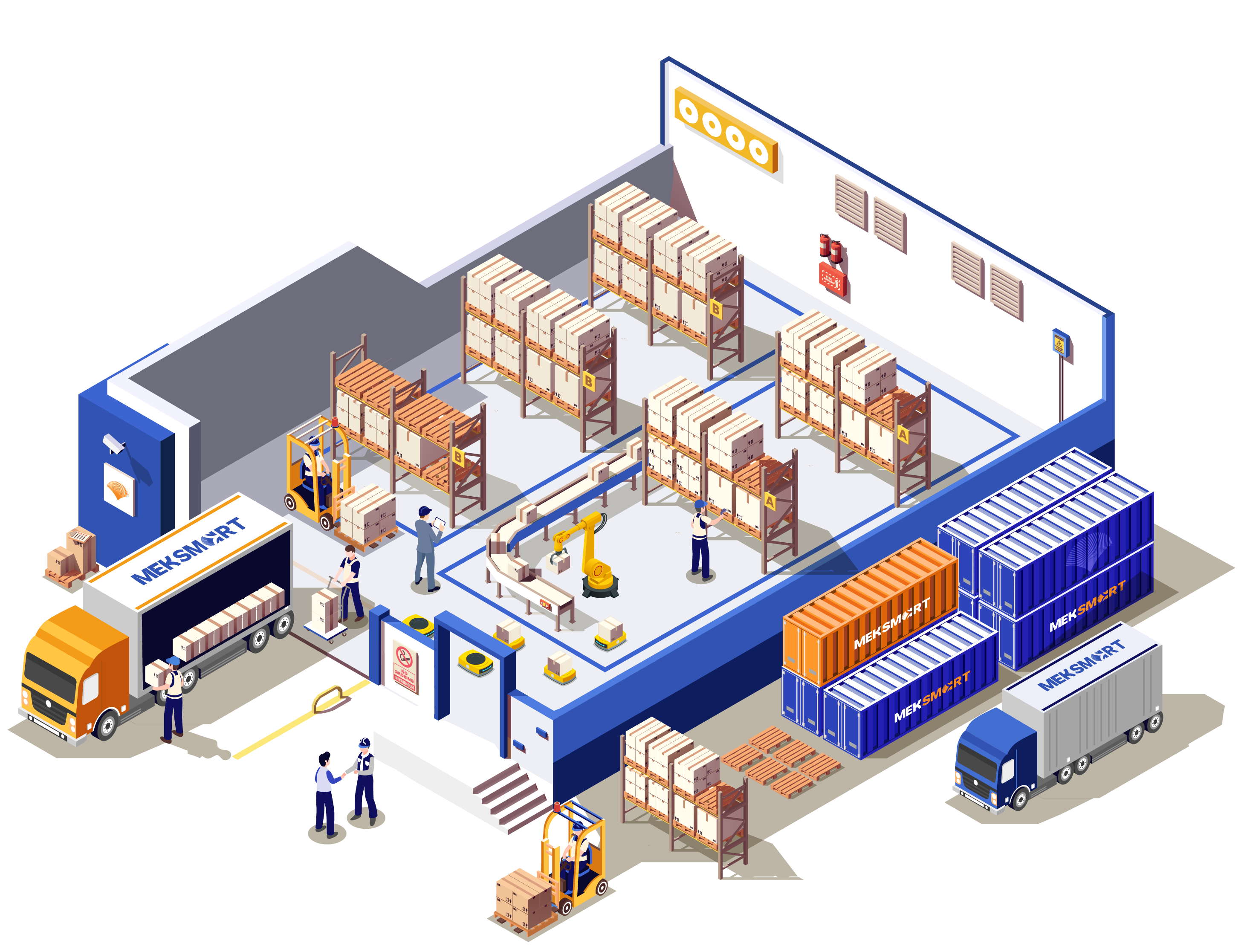MEKSMART
GENERAL NEWS
Author: Meker Meksmart
Update: 17/10/2022
FUNCTIONS OF WAREHOUSE MANAGEMENT SYSTEM
Warehouse management system or Warehouse management system (WMS) possesses many important functions to help businesses run warehouse-related activities smoothly, saving human costs and time.
Let's take a look at some of the functions of a WMS warehouse management system that should be included in today's article.

Functions of the warehouse management system
1. Receiving - Receiving goods
WMS provides various types of warehouse functions such as EDI transactions – allowing carriers to schedule appointments with the dock and allowing for better scheduling of pickups. In addition, there is a function of ASN or advance shipping notification.
This function has the following properties:
- Record damage claims from suppliers
- Provide barcodes for carton and pallet labels
- Determine where to forward and bulk when products are received and for available quantities
- Optional paperless and paperless receipt
- Confirm product processing special requirements before shipping
- Cross docking from receiving to packing without sending out
- Report receipts to warehouse and sales staff
2. Quality assurance - Quality assurance
This function allows storage sample test criteria from supplier/SKU/product number.
In addition, there are some features such as:
- Stores information on quality assurance specifications
- Support vendor compliance program, or report key data scorecards, delivery/receiving errors, on-time deliveries, etc.
- Report incident receipts to relevant personnel.
3. Put away - Put away
After completing the receiving step, the product must be docked to be transported to the packing station. The next step is the order needs to be filled out or placed away.
The warehouse management system will help eliminate work thanks to the ability to define bin/slot location, cubic capacity, and storage type, in addition to volume characteristics and product configuration.
4. Replenish inventory
Warehouse management systems can add automatic storage of goods or bulk forwarding before the next order is sent to the floor for choice. WMS also eliminates the cost of returning goods to the warehouse as well as optimizing time.
5. Production and assembly
Many WMSs provide various features such as task orders, assembly control, kits, and inventory control.
The functionality supports stock/sales usage tracking options at component levels and sets, tracking labor usage based on task orders or assembled/worked goods submit.
6. Smart slotting
WMS supports product delivery. The SKU assignment process selects locations according to multiple criteria such as size, category, weight, sales speed, etc.
This function helps to improve productivity by reducing shipping time or requiring fewer additions or size changes.
7. Inventory Management
WMS helps to track product location and inventory usage in different locations. Benefits of an inventory management function include kiting management, production/WIP, or tracking of goods and finished products.
WMS allows businesses to make the most of block space, maintaining a solid audit of the warehouse/bin location as well as the goods stored from receipt.
Epilogue
Above is some information about the functions of the warehouse management system. Meksmart hopes that the article will provide useful information for you. To learn more about smart inventory management solutions, please contact us right here .











